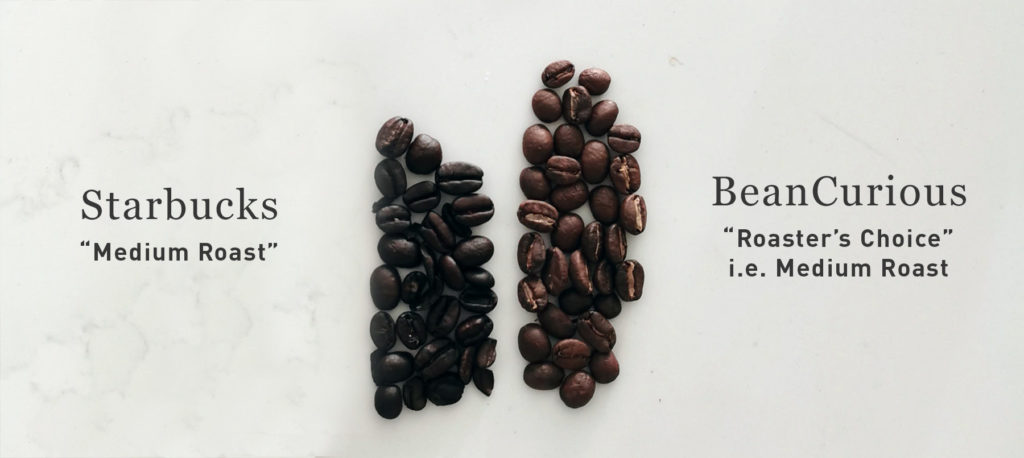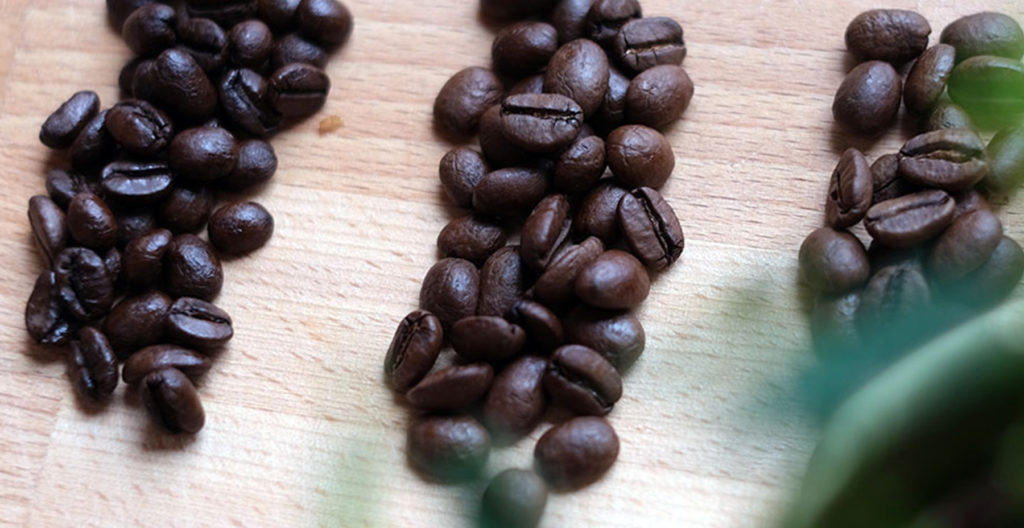Different Roasts for Different Folks
Finding your Perfect Brew
Coffee beans come in different flavours and varieties, but one of the most significant factors determining its taste is its roasting level.
Roasting coffee isn’t simply a part of the processing; it’s about heating them at distinct levels at certain time intervals to elicit an ideal, final flavor profile.
As you choose your next bag of fresh-roasted coffee beans from BeanCurious, here are some of the roast levels you’ll encounter and what they mean to your cup of joe.
Coffee Roasting Basics
Roasting coffee beans is a process that takes years to master, and experts take great pride in the products they create. Coffee roasters heat beans at various temperatures and lengths of time, depending on the variety and desired roast level.

There are three general roast types:
- Light Roast: At this level, beans are roasted until the end of the “First Crack” or not before the end. The bean won’t have any oil on the outside. Once brewed, it will produce a lighter brown colour than other roast levels. There’s also emerging research about the health benefits of this roast variety.
- Medium Roast: Beans are roasted until “First Crack” is done or even to the full expansion of beans after “First Crack”. This process produces a less acidic, slightly sweeter brew while maintaining the unique flavours of each bean that resembles its origin. Like lighter roasts, the beans will not appear oily after roasting.
- Dark Roast: Dark roasts involve higher temperatures and for more extended periods resulting in less acidic coffee and beans that appear oily. Coffee beans in dark roasts take on the flavour of the roasting process, often featuring the taste of roasted nuts and cocoa. Unlike lighter roasts, dark roasts often lack the unique qualities of the bean’s origin.
Why Coffee Roast Levels Matter
So, we know different roast levels exist. But why does it matter? What does it do to the coffee bean?
Tasting Notes
The origin, growth, and harvesting processes aren’t the only aspects a coffee enthusiast should look into. A coffee bean’s roast level is just as significant and the second most critical factor in flavour next to a bean’s origin.
Light Roast
Light roasts preserve the delicate aromas of the beans best, especially floral and fruity flavours. Some tasting notes, like jasmine, red fruit or zesty citrus, are only detectable if you roast your beans light. Light roast levels will have higher acidity levels and fruitiness than others.
Medium Roast
Medium roasts are all about balance. But don’t be fooled—medium roasts are not always the same, resulting in a vast range of flavours. For example, one well-known coffee brand (which starts with an S and ends in ucks) has a medium roast that is so dark that the beans barely hold onto any of their unique flavours. This darker side of “medium” is not only found in chain coffee stores like this one but also many store-bought varieties, you may find at your local grocery stores.
At Bean Curious, we use our Roaster’s Choice level as a median benchmark, and it varies from bean to bean. Why? Every bean is different, so every bean needs a different roast profile to provide an optimal tasting experience.
You can think of our Roaster’s Choice option as an omakase. Roaster’s Choice strives to find the perfect harmony of flavour by maintaining a bean’s natural floral and fruity notes but with a reduced bite of acidity. Simultaneously, this balanced roast elicits the nutty, chocolate flavours that coffee lovers dream of.
Dark Roast
Dark roasts bring out that familiar, standard “coffee taste” of caramel and chocolate because the natural sugars caramelize throughout the process. Darker roasts also reduce a coffee bean’s acidity, resulting in a round, full-bodied mouthfeel profile.

Additional Influences of Coffee Roast Levels
While the various roasting levels can draw different layers of flavour from coffee beans, they can also influence other factors such as rest periods, brew methods, grind size, and more.
- Rest Period: Dark roasts only need a few days, while lighter roasts tend to express fully approximately after two weeks.
- Brew Methods: Different roast levels call for different water temperatures, such as a lighter roast needing hotter water when brewed for a heavier body yet some acidity and fruitiness will be sacrificed. Keep this in mind next time you put your kettle on.
- Grind Size: The size you grind whole coffee beans will impact flavour balance and acidity levels. For example, finer grinds draw out higher body but lower acidity in lighter roasts.
Another fun fact? Lighter roasts contain higher caffeine content than their darker counterparts when you are comparing their % of caffeine by density yet vice versa when counting their % by mass.
Coffee Roasted How You Like It At Bean Curious
At BeanCurious, we offer all of our beans at three different roast levels: light, roaster’s choice, and dark.
Why? Because it allows you to leverage each subscription package to discover the perfect bean at your ideal roast level, resulting in your perfect cup of coffee.
It also allows you to explore the endless flavour profiles found in the world’s most beloved energizing brew. Which will you try first?


